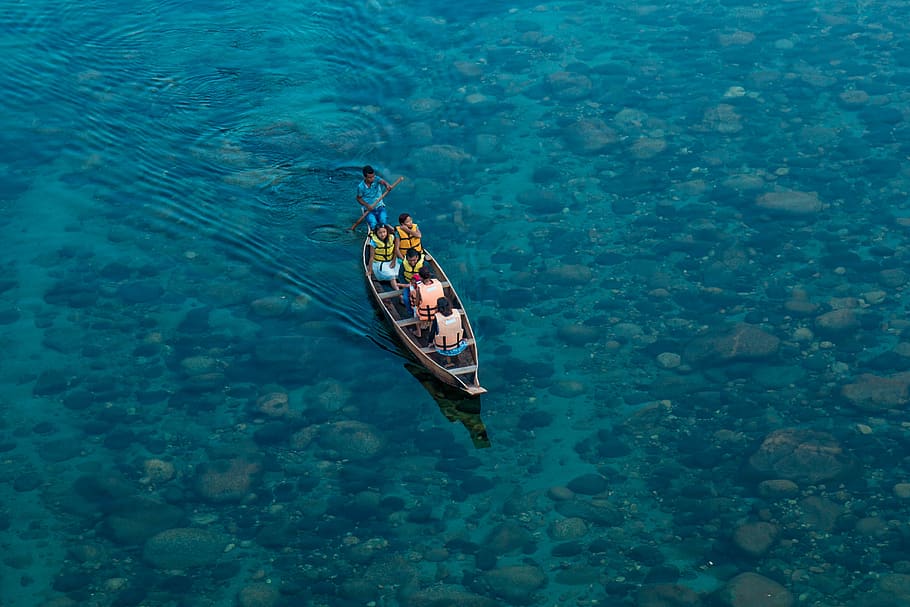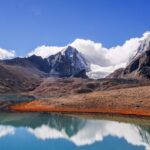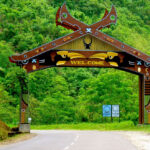Northeast India, a region often overshadowed by its more prominent counterparts, is a treasure trove of diversity, culture, and natural beauty. Comprising eight states—Arunachal Pradesh, Assam, Manipur, Meghalaya, Mizoram, Nagaland, Sikkim, and Tripura—this area is a melting pot of ethnicities, languages, and traditions. Nestled between the towering Himalayas and the lush plains of the Brahmaputra River, Northeast India is characterized by its unique geographical features and rich cultural tapestry.
The region is home to over 200 ethnic groups, each with its own distinct customs and practices, making it a fascinating destination for travelers seeking an authentic experience. The strategic location of Northeast India has made it a crossroads of various cultures and influences over centuries. The region shares borders with several countries, including Bhutan, Bangladesh, Myanmar, and China, which has contributed to its rich cultural heritage.
The diverse landscapes range from the snow-capped peaks of the Himalayas to the verdant hills and valleys, creating a stunning backdrop for exploration. As one delves deeper into this enchanting region, it becomes evident that Northeast India is not just a geographical entity but a vibrant mosaic of life that beckons adventurers and culture enthusiasts alike.
Key Takeaways
- Northeast India is a region known for its diverse culture, breathtaking natural beauty, and rich wildlife.
- The unique culture and traditions of Northeast India are a major draw for tourists, with each state having its own distinct customs and practices.
- The region is home to stunning landscapes, including lush green hills, cascading waterfalls, and serene lakes, making it a paradise for nature lovers.
- Adventure enthusiasts can indulge in a variety of outdoor activities in Northeast India, such as trekking, river rafting, and wildlife safaris.
- Northeast India is a haven for wildlife enthusiasts, with its rich and diverse range of flora and fauna, including rare and endangered species.
Unique Culture and Traditions
Festivals: A Celebration of Rich Traditions
The vibrant festivals celebrated across the region are a testament to the deep-rooted customs that have been passed down through generations. In Nagaland, the Hornbill Festival is a grand celebration that showcases the rich traditions of the Naga tribes through music, dance, and traditional crafts. This festival attracts visitors from all over the world who come to witness the colorful performances and engage with local artisans.
Traditional Attire: A Symbol of Cultural Identity
Traditional attire plays a significant role in expressing cultural identity. The women of Meghalaya are often seen wearing the traditional Khasi dress known as the ‘Jainsem,’ which is characterized by its vibrant colors and intricate designs. Similarly, the men of Arunachal Pradesh don traditional garments that vary from tribe to tribe, each telling a story of their heritage.
The Art of Weaving: Preserving Cultural Identity and Providing Economic Opportunities
The art of weaving is highly regarded in this region; intricate patterns and motifs are woven into textiles that often carry symbolic meanings related to nature and spirituality. This emphasis on craftsmanship not only preserves cultural identity but also provides economic opportunities for local artisans.
Breathtaking Natural Beauty
Northeast India is renowned for its breathtaking landscapes that range from rolling hills to dense forests and pristine rivers. The region’s natural beauty is accentuated by its diverse ecosystems, which are home to an array of flora and fauna. One of the most iconic destinations in this regard is Kaziranga National Park in Assam, a UNESCO World Heritage Site famous for its population of the Indian one-horned rhinoceros.
The park’s lush grasslands and wetlands provide a sanctuary for various species, making it a paradise for wildlife enthusiasts and photographers. Another gem in Northeast India is Meghalaya, often referred to as the “Abode of Clouds.” This state is famous for its living root bridges, which are created by training the roots of rubber trees to grow across rivers. These bridges are not only functional but also serve as a testament to the ingenuity of local communities in harmonizing with nature.
The stunning waterfalls like Nohkalikai Falls and the picturesque landscapes of Cherrapunji further enhance Meghalaya’s reputation as one of the wettest places on Earth. The interplay of misty clouds and lush greenery creates an ethereal atmosphere that captivates visitors.
Adventure and Outdoor Activities
| Activity | Participants | Revenue |
|---|---|---|
| Hiking | 10,000 | 500,000 |
| Camping | 8,000 | 400,000 |
| Rock Climbing | 5,000 | 300,000 |
| Kayaking | 7,000 | 350,000 |
For adventure seekers, Northeast India offers an array of thrilling outdoor activities that cater to various interests. Trekking is one of the most popular pursuits in this region, with numerous trails winding through picturesque landscapes. The trek to Dzongri in Sikkim provides breathtaking views of the Kanchenjunga mountain range and takes trekkers through lush rhododendron forests and quaint villages.
Similarly, the trek to the living root bridges in Meghalaya offers an immersive experience into the local culture while navigating through dense forests. Apart from trekking, river rafting in Arunachal Pradesh’s Siang River presents an exhilarating experience for adrenaline junkies. The river’s rapids provide an ideal setting for both novice and experienced rafters looking to test their skills against nature’s currents.
Additionally, rock climbing and paragliding are gaining popularity in various parts of Northeast India, allowing adventure enthusiasts to explore the region from different perspectives. Whether it’s scaling cliffs or soaring through the skies, Northeast India provides ample opportunities for those seeking an adrenaline rush amidst stunning natural backdrops.
Rich and Diverse Wildlife
The wildlife of Northeast India is as diverse as its cultures and landscapes. The region is home to several national parks and wildlife sanctuaries that protect a wide variety of species. Kaziranga National Park stands out not only for its rhinoceros population but also for its rich biodiversity that includes elephants, tigers, and numerous bird species.
Birdwatchers flock to this park to catch glimpses of rare avian species such as the Bengal florican and the great Indian hornbill. In addition to Kaziranga, Manas National Park is another UNESCO World Heritage Site that boasts a rich array of wildlife. This park is known for its population of golden langurs and pygmy hogs, both of which are endangered species.
The park’s unique ecosystem comprises grasslands, forests, and riverine habitats that support a wide range of flora and fauna. Wildlife enthusiasts can embark on jeep safaris or guided treks to explore these pristine environments while learning about conservation efforts aimed at protecting these vulnerable species.
Delicious and Authentic Cuisine
The culinary landscape of Northeast India is as diverse as its cultures, with each state offering unique flavors and dishes that reflect local ingredients and traditions. Assamese cuisine is characterized by its use of fresh herbs and vegetables, often accompanied by rice as a staple. Dishes like ‘Masor Tenga,’ a tangy fish curry made with tomatoes and lemon, showcase the region’s emphasis on freshness and simplicity.
In contrast, Nagaland’s cuisine features bold flavors with an emphasis on meat dishes. ‘Smoked Pork with Bamboo Shoot’ is a popular dish that highlights traditional cooking methods using bamboo containers over open flames. The use of local ingredients such as wild herbs and spices adds depth to these dishes, making them a must-try for food enthusiasts.
Additionally, fermented foods play a significant role in many local diets; dishes like ‘Akhar’ (fermented soybean) are not only flavorful but also packed with nutritional benefits.
Lesser-Known Historical and Cultural Sites
While Northeast India is often celebrated for its natural beauty and vibrant culture, it also harbors lesser-known historical sites that offer insights into its rich past. The ancient ruins of Ahom Kingdom in Assam are a testament to the region’s historical significance. The Talatal Ghar and Rang Ghar are remarkable structures that reflect the architectural prowess of the Ahom dynasty, which ruled Assam for nearly 600 years.
Another hidden gem is the ancient site of Moirang in Manipur, known for its historical significance during World War II as a strategic location for both Allied and Japanese forces. The site houses remnants of war history alongside traditional Manipuri culture. Visitors can explore local temples and engage with communities that have preserved their heritage through dance and music forms like Manipuri classical dance.
Tips for Exploring Northeast India
Traveling through Northeast India requires some preparation due to its unique geography and cultural nuances. First and foremost, understanding local customs and traditions is essential for respectful engagement with communities. Each state has its own set of practices; for instance, in Nagaland, it is customary to seek permission before taking photographs of locals or their homes.
Transportation can be challenging due to hilly terrains; therefore, planning ahead is crucial. Opting for local guides can enhance your experience by providing insights into hidden gems that may not be on typical tourist itineraries. Additionally, being mindful of weather conditions is important; certain areas may be inaccessible during monsoon seasons due to heavy rainfall.
Packing essentials should include comfortable clothing suitable for trekking or outdoor activities along with necessary gear like sturdy footwear and rain protection. Lastly, embracing local cuisine can be an adventure in itself; trying street food or dining at local eateries can provide authentic culinary experiences that reflect the heart of Northeast India’s diverse culture. Northeast India stands as a testament to nature’s artistry and humanity’s rich cultural heritage.
From its breathtaking landscapes to its vibrant traditions, this region invites exploration beyond conventional travel routes. Each journey through Northeast India unveils stories waiting to be discovered—stories woven into the fabric of its people, their customs, and their connection to the land they call home.
If you’re interested in learning more about the unique culture and traditions of Northeast India, be sure to check out this article on








